Introduction 9
Dental characters and terminology 9
Heterodonty 13
Monognathic heterodonty 14
Dignathic heterodonty 15
Gynandric or sexual heterodonty 15
Ontogenic heterodonty 15
Adaptative dental types 16
Root vascularisation 23
Tooth histology 25
Dental renewal 28
Dental deformities 28
Bioerosion 30
Collecting methods 30
Problems of dental characters 32
Taxonomic value 32
The chondrichthyan tooth record at the generic level 33
Convergence and parallelism 33
Biochronology, evolution and lineages 34
Elasmobranch association and paleoenvironment 36
Relationship between the length of a shark and the size of its teeth 38
The dermal denticles 38
Body morphology 40
Habitat 42
Diversity 43
Stratigraphical framework 43
Classification 45
Systematics 47
Class Chondrichthyes HUXLEY 1880 47
Subclass Elasmobranchii 47
Order Xenacanthiformes 47
Family Xenacanthidae 47
Order Eugeneodontiformes 48
Family Edestidae 48
Cohort Euselachii 48
Order Ctenacanthiformes 48
Superfamily Ctenacanthoidea 48
Family Ctenacanthidae 48
Ctenacanthoidea incertae familiae 49
Order Hybodontiformes 49
Superfamily Hybodontoidea 50
Family Hybodontidae 50
Family Distobatidae 57
Family Acrodontidae 60
Family Polyacrodontidae 65
Family Lonchidiidae 67
Family Steinbachodontidae 76
Family Pseudodalatiidae 76
Hybodontoidea incertae familiae 77
Hybodontoidea or Neoselachii? 78
Family Ptychodontidae 78
Family Homalodontidae 81
Cephalic spines and fin spines of Hybodontoidea and Ctenacanthoidea 82
The case of Phoebodontidae and of Phoebodus SAINT JOHN & WORTHEN 1875A 83
Subclass, order and family incertae sedis 83
Order, family and genus indet. 83
Hybodont egg-capsules 84
Subcohort Neoselachii 84
Superorder Squalomorphii 89
Order Hexanchiformes 89
Suborder Chlamydoselachoidei 89
Family Chlamydoselachidae 90
Suborder Hexanchoidei 91
Family Hexanchidae 92
Family Heptranchidae 98
Family Orthacodontidae 99
Family Paraorthacodontidae 101
Family Pseudonotidanidae 103
Order Echinorhiniformes 106
Family Echinorhinidae 106
Order Squaliformes 111
Family Squalidae 111
Family Centrophoridae 116
Family Etmopteridae 117
Family Somniosidae 124
Family Oxynotidae 129
Family Dalatiidae 131
?Squaliformes incertae fam. 139
Order Pristiophoriformes 139
Family Pristiophoridae 141
Order Squatiniformes 143
Family Squatinidae 143
Superorder Squalomorphii? 147
Family Protospinacidae 147
Superorder Galeomorphii 149
Order Heterodontiformes 150
Family Heterodontidae 150
Order Orectolobiformes 154
Family Hemiscylliidae 154
Family Orectolobidae 158
Family Parascylliidae 163
Family Brachaeluridae 165
Family Stegostomatidae 168
Family Ginglymostomatidae 168
Family Rhincodontidae 175
Orectolobiformes incertae familiae 177
Order Lamniformes 183
Family Mitsukurinidae 184
Family Odontaspididae 191
Family Pseudocarchariidae 209
Family Lamnidae 209
Family Otodontidae 222
Family Xiphodolamiidae 228
Family Cardabiodontidae 229
Family Cretoxyrhinidae 231
Family Paraisuridae 236
Family Pseudoscapanorhynchidae 238
Family Alopiidae 240
Family Cetorhinidae 243
Family Anacoracidae 245
Family Pseudocoracidae nov. fam. 249
Family Megachasmidae 252
Family Serratolamnidae 252
Lamniformes incert. fam 253
Order Carcharhiniformes 262
Family Scyliorhinidae 262
Family ?Proscylliidae 282
Family Triakidae 284
Family Hemigaleidae 294
Family Carcharhinidae 298
Family Sphyrnidae 315
Carcharhiniformes incertae familiae 317
Order Synechodontiformes 318
Family Palaeospinacidae 318
Synechodontiformes incertae familiae 322
Synechodontiformes fin spine 324
?Galeomorphii incertae sedis 324
?Galeomorphii or Squalomorphii incertae sedis 325
Neoselachii incertae ordinis 325
Family incertae ordinis 328
Family Agaleidae 328
Family Ostenoselachidae 329
Order and family incertae sedis 330
Fin spine of unknown neoselachian affinity 331
Genera based on dermal denticles 331
Superorder Batomorphii 333
Order Rajiformes 335
Suborder Rhinobatoidei 335
Family Rhinidae 335
Family Rhynchobatidae 336
Family Rhinobatidae 337
Family Platyrhinidae 346
Family Hypsobatidae 347
Family Parapalaeobatidae 350
Rhinobatoidei incertae familiae 352
Suborder Rajoidei 357
Family Rajidae 358
Family Cyclobatidae 364
Rajoidei incertae familiae 366
Suborder Sclerorhynchoidei 367
Family Sclerorhynchidae 367
Suborder Sclerorhynchoidei? 389
Family Ptychotrygonidae 389
Suborder Pristoidei 392
Family Pristidae 393
Rajiformes incertae subordinis 397
Family Archaeobatidae 397
Rajiformes incertae familiae 400
Order Torpediniformes 409
Superfamily Torpedinoidea 409
Family Torpedinidae 409
Superfamily Narcinoidea 410
Family Narcinidae 410
Order Myliobatiformes 411
Superfamily Dasyatoidea 412
Family Dasyatidae 412
Family Urolophidae 423
Family Urotrygonidae 425
Family Hexatrygonidae 425
Family Plesiobatididae 426
Family Potamotrygonidae 426
Family Gymnuridae 428
Dasyatoidea incertae familiae 430
Superfamily Myliobatoidea 444
Family Myliobatidae 444
Family Rhinopteridae 454
Family Rhombodontidae 454
Myliobatiformes incertae familiae 455
Myliobatoidea incertae familiae 456
Superfamily Mobuloidea 456
Family Mobulidae 456
Genera of Myliobatiformes based on dermal elements 463
Thorns 463
Caudal sting spines 463
Genus of Myliobatiformes based on traces of burying and feeding activities 463
Remains that are not selachians 464
Appendix
Genera published 2008-2012 465
Addendum to Handbook of Paleoichthyology, vol. 3D
The Late Permian euselachian Wodnika 467
References and Bibliographies 468
Abbreviations used in Figures 505
Abbreviations of Institutions 507
Index of Higher Categories 508
Index of Genera 509
HPI 3E • Chondrichthyes – Mesozoic and Cenozoic Elasmobranchii: Teeth
2012. [Englisch] – 512 S., 459 Schwarzweißabbildungen.
30,3 x 21,5 cm, Hardcover.
Reihe: Handbook of Paleoichthyology
360,00 €
zzgl. Versandkosten / Versandkostenfrei in D
AGASSIZ's beautifully illustrated five volume opus « Recherches sur les poissons fossiles » (1833-1844) was the actual beginning for paleoichthyology. He gave, in this publication, the first comprehensive presentation of fossil agnathans and fishes. In the ensuing years, numerous descriptions of forms (mostly from Europe and North America) have been published. These were compiled by A. S. WOODWARD (1889-1901), one of the many excellent paleoichthyologists (from past to present) in Great Britain, in his famous "Catalogue of Fossil Fishes in the British Museum (Natural History)". The catalogue was compiled so well that it is continually used by specialists in paleoichthyology.
In Scandinavia after World War I, E. A. STENSIÖ founded an important school for paleoichthyology. He and his followers did extremely detailed investigations, with great emphasis on anatomical interpretations. These brought about strong controversies, between the Scandinavian and the English-American schools, regarding the interpretation of morphological data and the interrelationships of different groups of agnathans and fishes. Even though the Scandinavian school has disappeared, the controversy still exists; and the Russian, German and French paleoichthyologists find themselves having to take sides. Between 1960 and 1970 one synopsis in Russian (OBRUCHEV, D. V. (ed.) 1964: Osnovy paleontologii, vol. 11: Agnatha, Pisces; 1967: Engl. translation), one in French (PIVETEAU, J. (ed.) 1964 to 1969: Traité de Paléontologie, vol. 4: 1, Vertébrés, Agnathes; 2, Gnathostomes, Acanthodiens, Placodermes, Élasmobranches; 3, Actinoptérygiens, Crossoptérygiens, Dipneustes) and a shorter one in German (MÜLLER, A. H. 1966: Lehrbuch der Paläozoologie. Band III. Vertebraten. Teil 1. Fische im weiteren Sinne und Amphibien) were published, representing the whole field of paleontology. Osnovy showed a systematic viewpoint and Traité a morphological-anatomical viewpoint. A new version of the fish volume of the Osnovy (NOVITSKAYA, L. I., AFANASSIEVA, O. B. (eds.), Agnathans and Early Fishes) was published in 2004; it presented selected groups of Paleozoic fishes (Thelodonti, Heterostraci, Osteostraci, Sarcopterygii [Crossopterygii and Dipnoi]), but is more geographically constrained than the former.
New and young paleoichthyologists have replaced the older and so well-reputed generation. New findings, especially in remote or less explored regions (Asia, southern continents, and northern and southern polar regions) reveal a great amount of new information about Paleozoic agnathans and fishes. In addition, another event has influenced and will continue to influence paleoichthyology: HENNIG's book "Grundzüge einer Theorie der phylogenetischen Systematik" (1950) translated in 1966 into English ("Phylogenetic systematics") by R. ZANGERL, a contributor to the Handbook. Since the 1970s, the revision, verification and falsification of the old ideas regarding the interrelationships of agnathans and fishes has begun.
The Handbook of Paleoichthyology summarizes (as far as possible) all known data as a base for comparison with new findings and for interpretation of interrelationships. The reader will find the most current analysis of interrelationships, sometimes even contrary to ones in different volumes.
Each volume deals with the anatomy and the fossil record of agnathans or of a group (class, subclass, etc.) of fishes, except volume 10, which deals with one organ of osteichthyan fishes - otoliths or ear stones. We add two volumes on elasmobranch teeth: Vol. 3D Chondrichthyes (Paleozoic Elasmobranchii: Teeth) appeared in 2010, and now Chondrichthyes 3E (Mesozoic and Cenozoic Elasmobranchii: Teeth). A special volume 3C will deal with the skeletal anatomy of the Elasmobranchii. Vol. 3D Chondrichthyes (Paleozoic Elasmobranchii: Teeth) was awarded a price for outstanding accomplishment by the Polish Minister of Science and Higher Education in 2011.
Volumes 3A and 3B of the Handbook have been sold out, even a reprint of volume 3B. In addition many publications on shark teeth have been published since the beginning of the 1980s. Therefore it was decided to produce a second edition of volumes 3 (3D and 3E), to add all the new data published in recent years on elasmobranchs. Volumes 1A and 8A are in progress. I hope that the Handbook will continue to flourish and draw near completion under Dr. FRIEDRICH PFEIL, its present publisher.
Lawrence, November 2010, H.-P. SCHULTZE
Sie müssen angemeldet sein, um eine Bewertung abgeben zu können.
„*“ zeigt erforderliche Felder an
Ähnliche Produkte
-

Paleozäne Foraminiferen von den Emperor Seamounts, NW-Pazifik (DSDP Leg 55)
40,00 €zzgl. Versandkosten / Versandkostenfrei in D
-
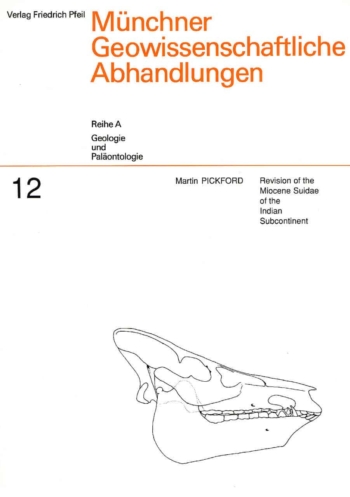
Revision of the Miocene Suidae of the Indian Subcontinent
30,00 €zzgl. Versandkosten / Versandkostenfrei in D
Wir sind gerne für Sie da
Verlag Dr. Friedrich Pfeil
Wolfratshauser Str. 27
81379 Munich – Germany
Tel.: +49 89 55 28 6000
Fax: +49 89 55 28 6004
E-Mail: info@pfeil-verlag.de
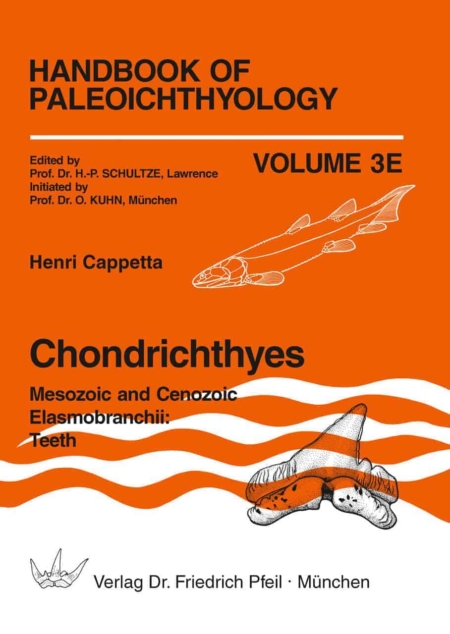
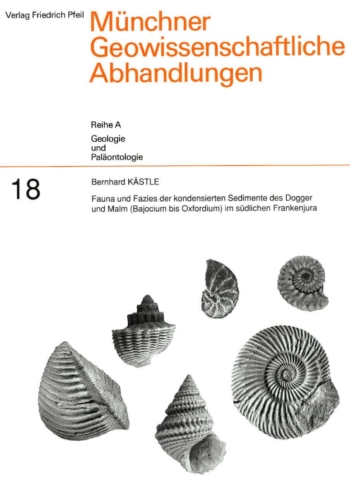
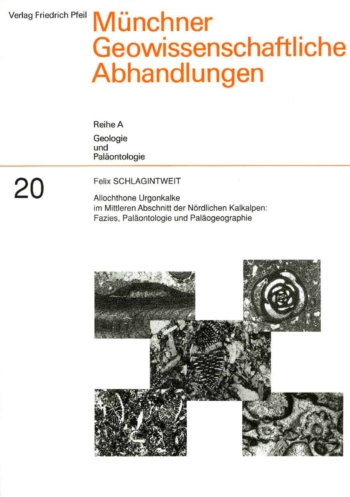
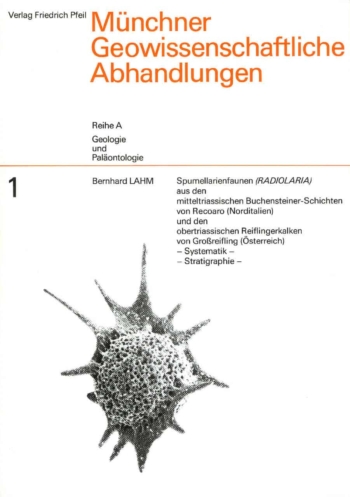
Bewertungen
Es gibt noch keine Bewertungen.